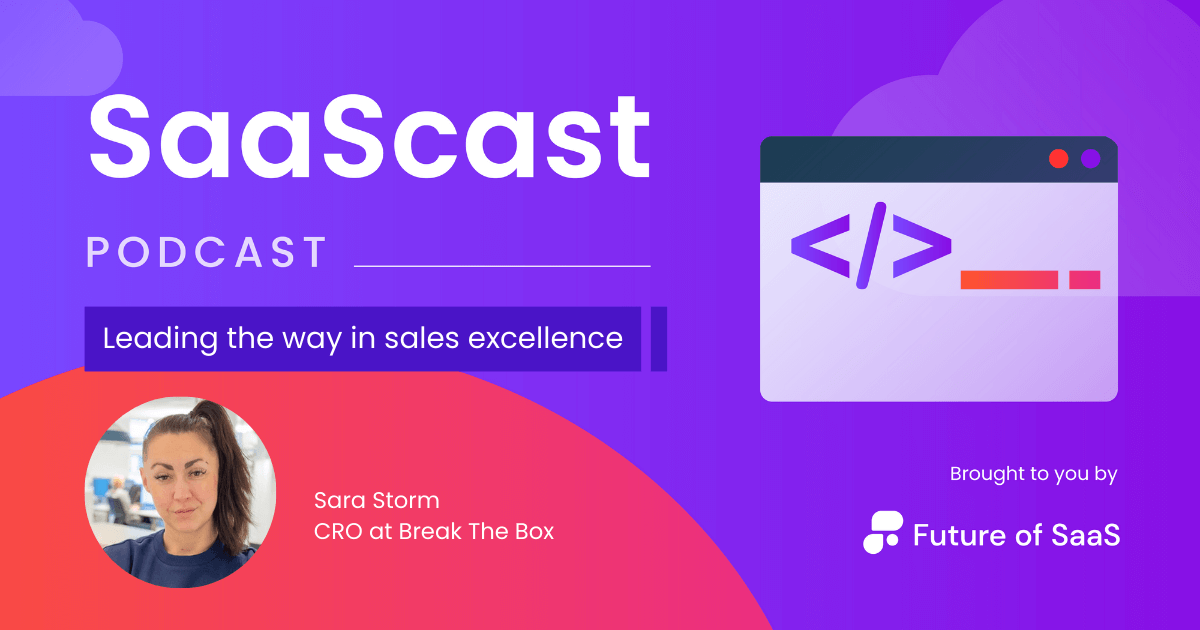Sales is one of the oldest professions on record, and there’s one common principle that has stayed true the whole time: address the issues your product can solve for the customer.
As the SaaS industry has become increasingly oversaturated, this principle has become more important than ever. There are so many SaaS solutions out there that you have to push harder than ever to ensure your product speaks to the customer, and demonstrates how you can solve their problems.
But in order to make this process smoother, you need to have a firm structure in place. This is exactly what your Sales funnel will provide you. But what does the Sales funnel look like? And, more importantly, how do you get customers to the conversion stage? That’s what we’re here to find out. Let’s dive in.
What is the SaaS sales funnel and why is it important?
The SaaS sales funnel is a holistic process that begins the first time your prospect becomes interested in your product, and ends when money first changes hands.
So, let's start at the bottom of the funnel. Here, your job is to be keenly aware of both the value your product offers, and the common problems within the market you're operating in. You have to aim to speak directly to the pain points of the prospect. Accomplish this using the following methods:
- Attain engagement
- Showcase proficiency
- Convey value
Being super mindful of prospect psychology at each stage of the funnel means smooth sailing to the next stage. And, by keeping a hawk eye on how your users behave at each stage (and how they respond to your sales reps’ strategies), you can repair crucial gaps in your funnel and identify parts of the process that aren’t working.

This is the ultimate value a sales funnel provides: it gives you essential structure so errors in the process can be patched up. There are various factors that will determine the general shape of your sales funnel. Let’s break them down:
Spotting potential customers
Your team needs to grasp what interests potential buyers in your target market. The goal is for your reps to use this knowledge to connect with buyers, building trust in your product.
Crafting sales plans
Your product should be the solution to a specific customer problem. Effective communication and messaging are crucial here. Customers respond best when they see ideas and language that directly address their challenges, while also instilling confidence that your product offers real solutions.
Finding fresh leads: Leads can pop up from various sources, and each interaction is a chance for a referral. Always keep an eye out for these opportunities.
Once you've identified your market and fine-tuned your messaging, launch a new campaign for lead generation. Leads can come in two flavors: inbound, where customers reach out to you independently, and outbound, where you initiate contact through email, phone, online events, or an existing account.
The stages of a SaaS sales funnel
The SaaS sales funnel has a lot in common with the traditional sales funnel. As we mentioned at the beginning of the article, there are many principles of sales that hold true in SaaS, however the SaaS sales funnel is slightly unique in that it also prioritizes retention as part of the process.
Retention is incredibly important for SaaS companies as it’s less costly than acquisition, and has a positive impact on future conversions. Loyal customers essentially act as ambassadors for your brand and product. Let’s break down each stage of the funnel here.
1. Awareness
This is when customers first become aware of your product, whether that’s through inbound or outbound tactics. The question you need to ask here is why? What pain points have led this prospect to our product? Being able to answer this question will ensure that you’re able to guide the prospect to the end of the funnel.

2. Engagement
What's really important at this stage is to establish rapport with your prospects, answering questions they might have and, most importantly, displaying soft skills such as empathy and approachability. Customers want to be able to look at your landing page, see what you do, see that you’re an authority in your field, and that you’re professional and trustworthy.
Your job here is to put a friendly face to your brand and establish a firm foundation for future relationships. A heavy-handed approach, offering trials or packages right out the gate can make your company seem overly mercenary.
3. Exploration
At this stage, trust has been won and your jobs now are to:
- Really show off the value of your product,
- Become keenly aware of what the individual challenges of each prospect are,
- And start demonstrating how your product can solve these problems.
This is also known as ‘warming your leads’, priming them for conversion.
Now is the time to showcase the key features of your product. Prospects are going to want to get their hands on it, so it’s time to prove its worth, perhaps through how-to videos and demos.
One of the key aims of the SaaS sales funnel is to provide a smooth sailing and speedy journey to the value moment. In other words, the moment when prospects realize your product is an indispensable part of their day-to-day working life.

4. Conversion
At this stage, you’ve successfully led your prospect to the value moment, and they are primed to sign up for your service. But the work doesn’t stop here. You still have to ensure that the sign-up process is as smooth and frictionless as possible. Ensure that you don’t overwhelm your prospect with intrusive sign up docs.
Remember that a successful funnel fosters retention as well as conversion, so you’ll want to ensure that customers don’t feel neglected as soon as they convert.
How to set up your SaaS sales funnel
Picture your sales funnel as a roadmap leading customers to the ultimate destination: becoming a paying customer.
The key to a robust revenue stream? Growing conversion rates steadily. Speed matters here—notice any slowdowns in the funnel? That's a red flag. If bottlenecks become a regular thing, it's time for a structural check. Keep a close eye on page metrics—they reveal essential funnel performance.
Identify those sticking points—those spots where customers hesitate. Dive deep into these areas if you sense any resistance. A swift journey through the sales cycle? That's the gold standard.
Here are the key aspects of the sales funnel:
Lead magnets
These refer to ads and campaigns designed to attract potential customers to your landing page. This is critical to success in the awareness stage. You have to be able to get prospects into your funnel in the first place. And without the right marketing and SEO know-how, this simply isn’t possible.

Landing page
It's crucial for this page to swiftly address customer pain points. If they can't find a solution to their main question, they'll bounce right off. Keep a keen eye on those bounce rates—they're a serious signal. Once they drop, you've got a landing page that's hitting the mark. This is critical in the engagement stage. Customers want to see that you’re a trusted authority in your industry.
Be mindful that your page has the following attributes:
- Describes what you do and what problem you solve.
- Looks professional and uncluttered.
- Showcases key achievements and prestige front and center.
Upsell page
After enticing customers with free trials and sealing the deal on orders, your funnel should naturally flow into the upsell page. Here, customers get the chance to throw in related items or level up their existing service or product and customize their order to suit their own needs. This is critical in the exploration stage.
Prospects at this stage are open to various features and attributes that your product offers. It’s important you offer a decent number of options without it being overwhelming. Too many packages can create friction in your funnel. Remember: the funnel needs to be as smooth as possible.

Checkout page
For customers in the conversion stage, this is the spot where real transactions go down, so make sure your payment methods are in line with what most prospects like.
Thank you page
Here you can make customers feel valued for having come aboard. It might seem unimportant, but this is the first step to making customers feel like they are respected and helps to foster long-term trust.
These stages are where you want to monitor your key metrics. You can pinpoint exactly where customers are exiting the funnel and ensure that you optimize any faulty areas.
Content and the funnel
No-brainer time: Content is key to showcasing your product, but it’s important to bear in mind that different stages of the funnel call for different forms of content. If you cram in too much detailed content at the top of the funnel, customers can get overwhelmed and confused, which can lead to early bouncing.
Let’s dig into what exactly you want to showcase at different points in the funnel:

Top of the funnel
The goal here is simple: show customers you’re trustworthy. Animations and clear, easy-on-the-eyes text make your brand look approachable and professional. Think of it like that first impression. Once you fumble it, you don’t get a second chance, so make sure your pages are dressed to impress.
Thought leadership can also do wonders here. By producing blog content and white papers around the problems you solve, you position yourself as a problem solver rather than a cynical cash grabber. This is how trust is created.
Middle of the funnel
This is where details really count. Trust is established and it’s time to present content that showcases what you do. How-to videos and product demos show off your product’s unique benefits and features. Remember that, at this stage, customers will likely be looking at other solutions on the market, so it’s crucial that you think about differentiation, and bring the unique ways that your product shines to the forefront.
Bottom of the funnel
This really ties into the conversion stage, so it’s essential that the sign-up page is transparent, easy to understand and doesn’t set up any unexpected hurdles. At this stage, you might want to include comparisons between the different packages you offer, and ensure that there is a clear CTA for exactly how customers can get started.
Important factors to bear in mind when setting up your sales funnel
When crafting your SaaS sales funnel, it’s important to be aware of the key factors that influence successfully getting prospects from one end of the funnel to the other:
Know your audience
A common mistake that SaaS leaders make is this: they make products for themselves, not for the customer. The potential solution looks so cool to them, they assume it must be just as exciting for everyone else.
Meticulously research the common problems people within your market are facing, and gear your product towards those. This includes being aware of what your competitors are doing, what they’re doing right, and what they’re failing to address. Your job then is to fill the gap that they’re not filling.

Chart the customer journey
A term you have to become aware of is ‘touchpoints’. Touchpoints are the key interactions that customers have with your product or band. This can be in the form of website traffic, ad clicks, or sign-ups. By being aware of this you can optimize your funnel and strengthen weak links within it. For example, are customers typically bouncing when they first hit your homepage (a weakness in the awareness stage)? This might indicate a cluttered interface or poor messaging.
Optimize the customer onboarding process
As we’ve mentioned when charting out the custom journey, it’s essential to remove as much friction as possible. Prospects have to know exactly what they need to go to get from point A to B, and they don’t want to spend an hour filling out a lengthy form. In short, make the trajectory clear and obvious, and don’t make customers sign their lives away just to interact with your product.
Major metrics to track
Metrics are the guiding stars for the successes and failures in your growth-chasing efforts. We’re sure you’re familiar with all of them, but let’s zoom in on how exactly they help you optimize your funnel.
Customer churn
It seems obvious, but you have to keep a keen eye on how many customers are leaving and, more importantly, what’s triggering it. Once you’re able to zoom in on these causes, that’s where you can make critical changes to the funnel.

Customer acquisition cost (CAC)
We said previously that retention and advocacy are a critical part of the process, and if you keep a firm handle on your customer acquisition cost, you’ll see why. The effort it takes to draw leads and keep prospects in the funnel is costly. But additionally, keeping an eye on how much you’re spending on each stage of the funnel can reveal where you’re overspending and where funds may need to be redistributed elsewhere.
Customer lifetime value (CLTV)
This reveals how much money customers are bringing into your business over a prolonged period of time. If this value is too low across the board, it can expose many things. Maybe you’ve got too many customers on a basic freemium package and your CAC is outweighing your CLTV. In which case, you may need to think about rolling out a new upselling strategy or changing up your pricing.

Wrapping up
If there’s one thing to take away above all else, it’s this; ensure you’re always addressing the prospect. And we’re not talking about the prospect in your mind, or the prospect that looks like you, but the personas you’ve pinpointed through thorough research.
This is still the most fatal mistake most SaaS founders make.If you get this right, while there’s still a lot of work to be done, it will make every subsequent stage of the funnel significantly easier.
You cannot optimize a funnel for a customer that doesn’t exist. Look closely at the market and respond accordingly, and that will instantly put you ahead of much of the competition.
Want to hear more leading insights from the leading minds in SaaS? Why not sign up to a Future of SaaS membership for exclusive, growth-chasing tips.



